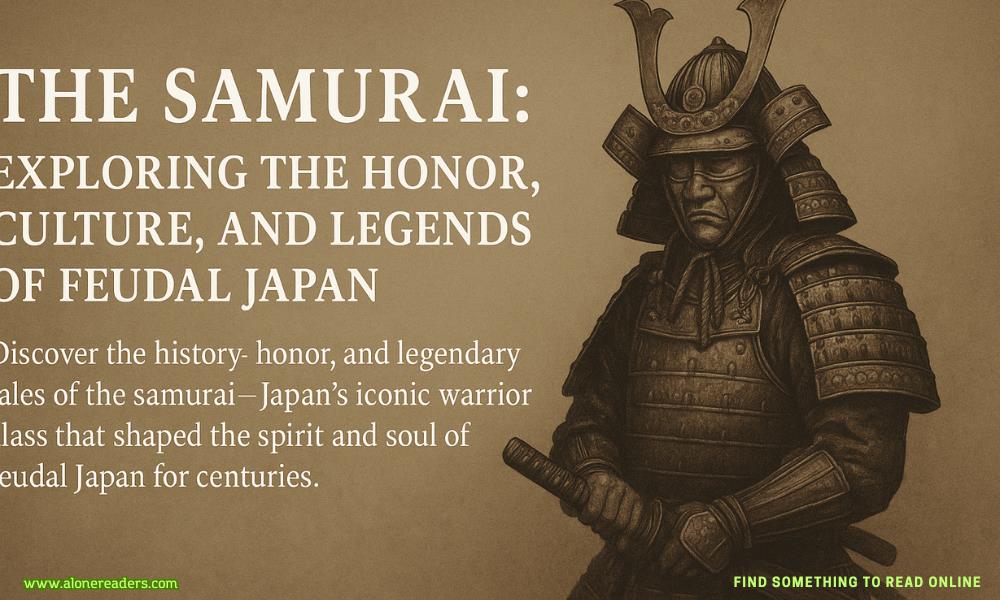
The samurai, known in Japanese as "bushi," were the military nobility and officer caste of medieval and early-modern Japan. Emerging in the late Heian period, these elite warriors became the dominant social and political class of the country for nearly seven centuries, from the 12th century until their dissolution in the late 19th century. More than just soldiers, the samurai embodied a strict ethical code, pursued cultural refinement, and played a significant role in shaping Japan's national identity. Revered for their unwavering loyalty and fearsome prowess in battle, they also left behind a rich legacy of literature, philosophy, and folklore that continues to influence modern popular culture.
The heart of the samurai ethos was the code of Bushido, meaning “the way of the warrior.” This code, though never formally codified like a Western legal system, emphasized virtues such as loyalty, honor, courage, and self-discipline. A samurai was expected to uphold these principles even at the cost of their life. Dishonor was often seen as worse than death, and it was not uncommon for disgraced samurai to commit seppuku, a ritual suicide meant to restore one’s personal honor or that of one’s family or lord. While Bushido changed over time and varied between clans, the spiritual and moral undertones of this code remained a constant anchor in the lives of these warriors.
Feudal Japan was structured around a complex system of loyalty and land ownership. At the top stood the emperor—more symbolic than authoritative—while true power rested in the hands of the shogun, the military dictator who governed on behalf of the emperor. The shogun’s authority trickled down to regional lords, or daimyo, each controlling their territories through samurai retainers. In exchange for their service and protection, the samurai were granted land, rice, or stipends. Loyalty between a samurai and their daimyo was sacrosanct; betrayal was rare and regarded with utmost contempt.
The samurai were as much intellectuals and artists as they were fighters. They were often well-educated and literate, unlike the peasant class. Calligraphy, poetry, and tea ceremony were practiced with the same diligence as martial arts. Some of Japan's most famous haiku poets, such as Matsuo Bashō, had samurai roots. This fusion of martial discipline and aesthetic appreciation created a unique warrior culture, one that aspired not just to defeat opponents but to live with grace and purpose.
Weapons were not merely tools of war for the samurai; they were extensions of the warrior’s soul. The katana, a curved, slender, single-edged sword, became the most iconic symbol of samurai identity. Forged with meticulous care, a katana was more than a blade—it was a sacred object, often passed down through generations. Samurai trained relentlessly in various martial disciplines, from archery and horseback riding to jiu-jitsu and kenjutsu, the art of swordsmanship. But even more than combat skill, it was the mental discipline and readiness to sacrifice everything that defined a true samurai.
Despite their cultural mystique, the samurai were also products of a brutal and often ruthless era. Feudal conflicts among rival daimyo plunged Japan into nearly constant warfare during the Sengoku period (1467–1600), a time known as the Warring States period. Samurai warriors during this era served as both soldiers and assassins, navigating shifting allegiances and deadly power struggles. Not all upheld the idealized virtues of Bushido. Some samurai were mercenaries or ronin—masterless samurai who often turned to banditry or hired themselves out for personal gain. The ronin, while often romanticized in stories, were a symptom of the instability and harsh realities of samurai life outside formal service.
The Tokugawa shogunate, established in 1603, brought peace and stability that lasted for over two centuries. With the absence of large-scale wars, the samurai evolved from battlefield warriors into bureaucrats, administrators, and scholars. Many took on government roles, helping to enforce the rigid social order of Tokugawa Japan. While this period, known as the Edo period, was relatively peaceful, the samurai were still bound by the ideals of Bushido and expected to maintain martial readiness and moral discipline.
The decline of the samurai began with the opening of Japan to the West in the mid-19th century. The Meiji Restoration of 1868 marked a dramatic transformation as Japan sought to modernize its military, economy, and society. The samurai class was gradually dismantled, their stipends revoked, and their privileges abolished. In 1876, they were even forbidden from wearing their swords in public. Many resisted this change, culminating in rebellions such as the Satsuma Rebellion led by Saigo Takamori, often considered the last true samurai. Yet the tide of modernization was unstoppable, and with the dawn of the modern Japanese army, the samurai era came to an end.
Though the samurai as a class disappeared, their influence lingers in Japan’s national psyche and global imagination. From kabuki theatre to anime, video games, and Hollywood films, the image of the stoic, sword-wielding warrior continues to captivate. Figures like Miyamoto Musashi, the legendary swordsman and author of The Book of Five Rings, have become symbols of discipline, strategy, and inner strength. Samurai values are still taught in some modern Japanese martial arts, and the Bushido spirit is often referenced in business, sports, and public life in Japan.
The legacy of the samurai is complex. They were both noble guardians and sometimes ruthless enforcers. They upheld a code that valued loyalty and honor, yet lived in a world filled with power struggles, class divisions, and political violence. But perhaps it is this very contradiction that makes them so compelling. They strove for moral excellence in an imperfect world, carrying swords not only to fight but also to live by a higher code. Through their legends and legacy, the samurai continue to embody the eternal human struggle to live with integrity amidst chaos.